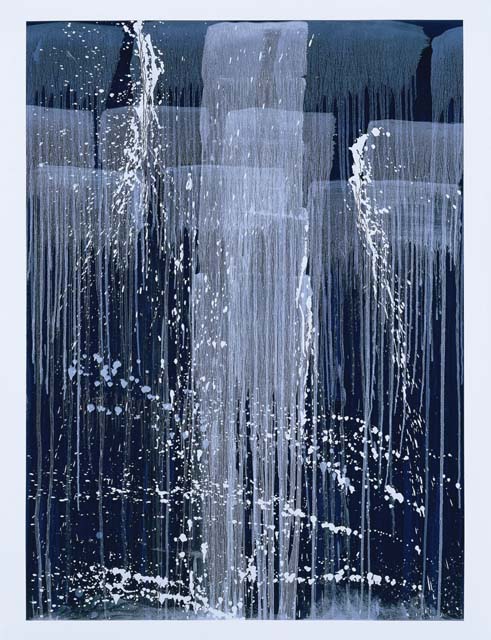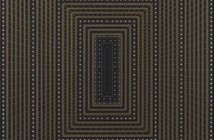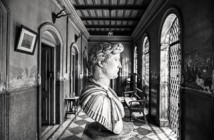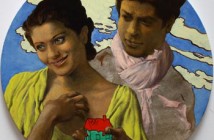“I am convinced that if more of us could spend a few minutes every day trying to develop a sense of inner peace, eventually it would become part of our lives; then everything we do will contribute to peace in the world.” – The Dalai Lama
These were the words of the Dalai Lama about The Missing Peace project which took place in 2007 at the Rubin Museum, sponsored by the Committee of 100 for Tibet and the Dalai Lama Foundation. The exhibit may be long over but here as we browse some of the images and the text, re-walk the galleries in memory, the exercise becomes both a meditation and a benediction.
Indeed, sometimes in life, the missing piece is the missing peace. This exhibition was sponsored by the Committee of 100 for Tibet and the Dalai Lama Foundation. Over 88 contemporary artists from around the world, working in a variety of media, offered works inspired by the vision and values of the Dalai Lama. It includes the work of established and emerging artists including Chuck Close, Lewis deSoto, Bill Viola, Ken Aptekar, Pat Steir, Jane Alexander, Anish Kapoor, Laurie Anderson, Christo and Jeanne-Claude, Tenzing Rigdol, Michael Rovner, Jenny Holzer, Richard Gere, and Marina Abramovic.
I visited the exhibition while doing a photo gallery piece for Beliefnet.com, the spirituality website. Beautiful images and beautiful words just become more so with the passing of years. Looking at them again, I feel the same sense of well-being as when I walked the space of the Rubin Museum surrounded by these offerings to the Dalai Lama.
Photos and text from The Missing Peace: Artists and the Dalai Lama
Slide 1 – Chase Bailey – Evolution into a Manifestation, 2005. Oil on linen 59×53 inches.
“My intention was to create in the viewer a meditative sense of the Dalai Lama, his reincarnation, and his evolutionary journey; I tried to communicate a feeling of his enduring evolution, and not simply present an image of his physical body. His aura is captured and expressed to give the viewer an experience of his inner strength, his peace, and to create an occasion of oneness with the wonderful and paradoxical sentient presence of infinite compassion.” – Chase Bailey
Slide 2 Lewis de Soto -Paranirvana -Mixed media with nylon, painted cloth 7x25x 6 feet
In Buddhist scriptures, Shakyamuni Buddha remained on the earth after attaining enlightenment in order to teach others his insights into achieving salvation. At the age of 80 he came to Kushinagar, where he preached his final sermon and died. This episode is the Paranirvana, the physical death of the historical Buddha and his entering into Nirvana, the state of oneness and perfection. This work by deSoto was occasioned by the loss of his father; he has superimposed his own face on the Buddha as he asks the universal question: “How will we all face the moment of our death?”
Slide 3: Om Mani Padme Hum, 2005 Bernard Cosey Black and white cartoon on heavy paper
20 x 16 in.
The work reverberates with the Buddhist mantra, Om Mani Padme Hum, which translates as “The Jewel of compassion and the lotus of wisdom dwell in the innermost heart.” The notion that ultimate wisdom and compassion are already within each of us is communicated.
Slide 4: Selection from the Survival Series: “IT IS IN YOUR SELF-INTEREST TO FIND A WAY TO BE VERY TENDER”, 1983 – 85
Jenny Holzer
White danby imperial marble footstool
17 x 23 x 15 3/4 in.
Slide 5: The Dalai Lama, 2005
Chuck Close
Digital pigment print
50 x 40 in.
Close is known for his large, iconic portraits such as this photograph of the Dalai Lama. The artist achieved his international reputation by demonstrating that a very traditional genre, portraiture, could be resurrected to become a challenging form of contemporary expression.
Slide 6: Untitled, 2006 Yoshiro Negishi
Acrylic on Canvas. 15 x 18 inches
“In watching the ever-changing mists and clouds rising about the mountains, I can lose all sense of time. In my paintings also, change is ever-present. From moment to moment, a different emotion is revealed. Catching hold of the delicate balance of these emotions as they appear, I attempt to bring out a condensed expression of these brief moments.”
Slide 7: The Golden Thread, 2006 Kirsten Bahrs Janssen
Mixed media 60 x 60 x 26 in.
Through touch and physical interaction, the viewers physically link their arms around the world, connected by a single golden thread.
Slide 8: At the Waterfall, 2000-2003 Marina Abramovic
Continuous video loop projection 11 x 45 ft.
“After 20 years of visiting Tibetan monasteries in India, the director of Tibet House in Delhi asked me if I would be a choreographer for Tibetan lama dancing and chanting. I was supposed to compress the performance into one hour and 20 minutes, without losing its essence. I ended up working in the monastery with 120 monks, using a megaphone to teach them how to come on stage, go off stage, remember the positions of the lights, how to change their elaborate costumes in less than 30 seconds, etc. I decided to project all 120 videos simultaneously on a large wall. Then I was hit with a realization: when you hear all the prayers from different monasteries and traditions at the same time, they sound like a huge waterfall.”
Slide 9: Bodies of Light, 2006 Bill Viola
Video diptych 2 min., 6 sec.
The male and female torsos shown here are tracked by a light, which traverses the bodies vertically, moving over the charkas – internal points of physical and spiritual energy. In the course of this process, we witness the dissolution of the figures into emptiness. Through his work Viola strives to connect the viewer with the image via the body as well as the intellect. Believing that a special form of knowledge can only be gained through a direct and visceral experience of an event, he uses the video medium as an avenue to self-knowledge.
Slide 10: Blue, 2005 Pat Steir
10-color screen print, edition of 40
56 1/2 x 43 in.
Steir’s image of the waterfall, like a chant, evokes stillness. Over the past ten years the stillness in her work has become more dense. She makes her marks by flinging, pouring, and dripping paint. Steir has said that she makes her work with the attitude of a gymnast, “first the meditation, then the leap.” In her art, she has given up chasing the self in favor of “something larger.”
(Photos and text courtesy – Rubin Museum of Art)
Related Article:A Journey to the East
















1 Comment
Pingback: » Blog Archive » Chase Bailey Makes The News